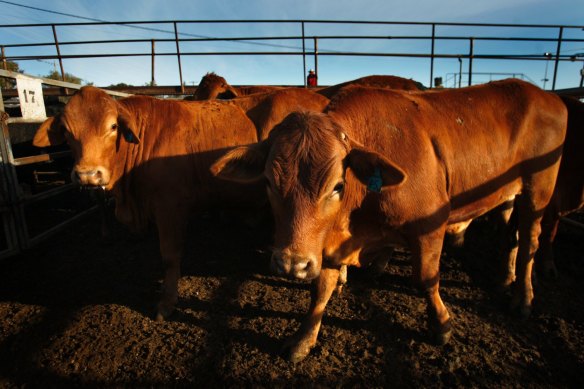
Generally, we see a market as “concentrated” if the biggest four firms control one-third or more of it. In 2016, Leigh and his colleague Adam Triggs found more than half of industries in the Australian economy were concentrated markets. Since then, concentration in Australia has become worse.
Farming, though, is surprisingly competitive – at least for most commodities. So why are we still seeing higher prices at the check-out?
Part of it is thanks to supply chain issues, especially during the pandemic, which meant we couldn’t get as many materials and produce from overseas, reducing supply and driving up prices. Then there’s always the temperamental weather, which can dramatically cut harvests.
But it’s a growing domestic issue which is causing headaches for farmers.
Before anything even springs out of the ground or fattens up in a paddock, farmers are dealt a tricky hand. The largest four fertiliser companies, for example, control nearly two-thirds of the market and the top four hardware suppliers control roughly half of the market, according to Leigh’s analysis of data from IBIS World.
From high-tech harvesters to tractors and seeding equipment, machinery is a big cost paid by farmers. That means when there’s a lack of options and farmers aren’t able to shop around as much, their hip-pockets – and ours – are worse off.
If you think that lack of choice is bad, Leigh says it’s even worse when farmers go to repair and service their equipment.

Assistant Minister for Competition Andrew Leigh.Credit: Alex Ellinghausen
Farming machinery makers have a lot of power – even more than carmakers – thanks to warranties forcing farmers to go to a specific dealer for servicing, and tech restrictions holding farmers back from accessing the parts, manuals and diagnostic software they need to make repairs themselves.
Then there are seeds. From these little things, big costs can grow. One paper from the US Department of Agriculture’s Economic Research Service in 2023 found the seed sector had become more concentrated. Between 1990 and 2020, the average seed price soared 270 per cent, and 463 per cent for genetically modified types.
The huge price increase partly accounts for the fact seeds have become better – for example, GMO varieties which have made farming more productive. But as Leigh points out, “there are not many other industries where the price of a key input has grown five-fold in 30 years.”
But that’s not all. Once the cattle has been raised or the blueberries grown, farmers have little choice or bargaining power when it comes to processing, transporting and selling produce.
When it comes to slaughtering cattle, the top five Australian processors accounted for about 57 per cent of the market in 2017, meaning cattle farmers had little choice in the prices and options they accepted. For fruit and vegetable processing, the biggest four companies hold about one-third of the market.
When the produce is ready to be sent out, farmers have even less choice. Two companies – ANL and Maersk – account for 85 per cent of the shipping freight industry in Australia, and four companies control 64 per cent of the market if farmers want to send things via rail.

Farmers, especially those who produce at a smaller scale, often become the “meat in a market concentration sandwich”. Credit: Louise Kennerley
As Leigh points out, the risk of spoilage further limits viable options available to farmers.
Then there’s the supermarket sector, where Coles and Woolies control about two-thirds of the market – a higher share than every OECD country except New Zealand and Norway.
Concentration at all these points means farmers are at greater risk of facing power imbalances, which show up in things such as unfair contracts, where terms are obviously lopsided. Bigger players in these concentrated industries can generally muscle in with terms which are worse for farmers, such as restricting them from raising issues or selling things at unfairly cheap prices.
All of this not only puts pressure on farmers, but can reduce their ability and incentive to invest in improving their product and the way they do things.
As Leigh puts it, farmers, especially those who produce at a smaller scale, often become the “meat in a market concentration sandwich”.
Loading
There’s no easy fix in all this, but preventing too many mergers, where companies combine and gobble each other up to become even bigger, is key to promoting competition.
Of course, bigger companies are not always worse. Their scale can allow them to do things more cheaply. But too little competition can lead to pumped-up prices which flow all the way through from more expensive seeds and fertiliser to the prices charged by supermarkets.
The Business Briefing newsletter delivers major stories, exclusive coverage and expert opinion. Sign up to get it every weekday morning.



























